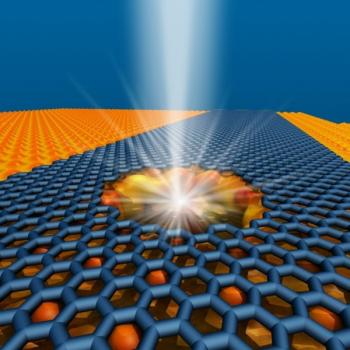Researchers from the University of Pennsylvania developed a new sensitive DNA sensor (sequencer) made from graphene drilled with nanopores. The same team already developed such a sensor in 2010, but this new method increases sequencing speed dramatically.

The idea is that the researchers have now measured current directly from the graphene, whereas before they measured ionic current in the solution as it goes through the pore. The researchers use graphene nanoribbons (GNRs), and when they pass a DNA base through the material, it modules the electrical current - in a different way for each base. The current in this method is a thousand times higher than in the previous method, which means measurements can be done a thousand times faster.
The GNRs were fabricated on a silicon nitride membrane and then metal contacts were attached. The researchers wired them to measure their resistance, and then used a TEM to drill nanopores in the GNR. But the TEM degraded the GNRs and increase the sheet resistance - so they needed to drill the nanopores without looking. The solution was to use a different imaging mode in the TEM, which produced a rough scan rather than high-definition picture. This limits the number of electrons that hit the graphene do not degrade it by much.